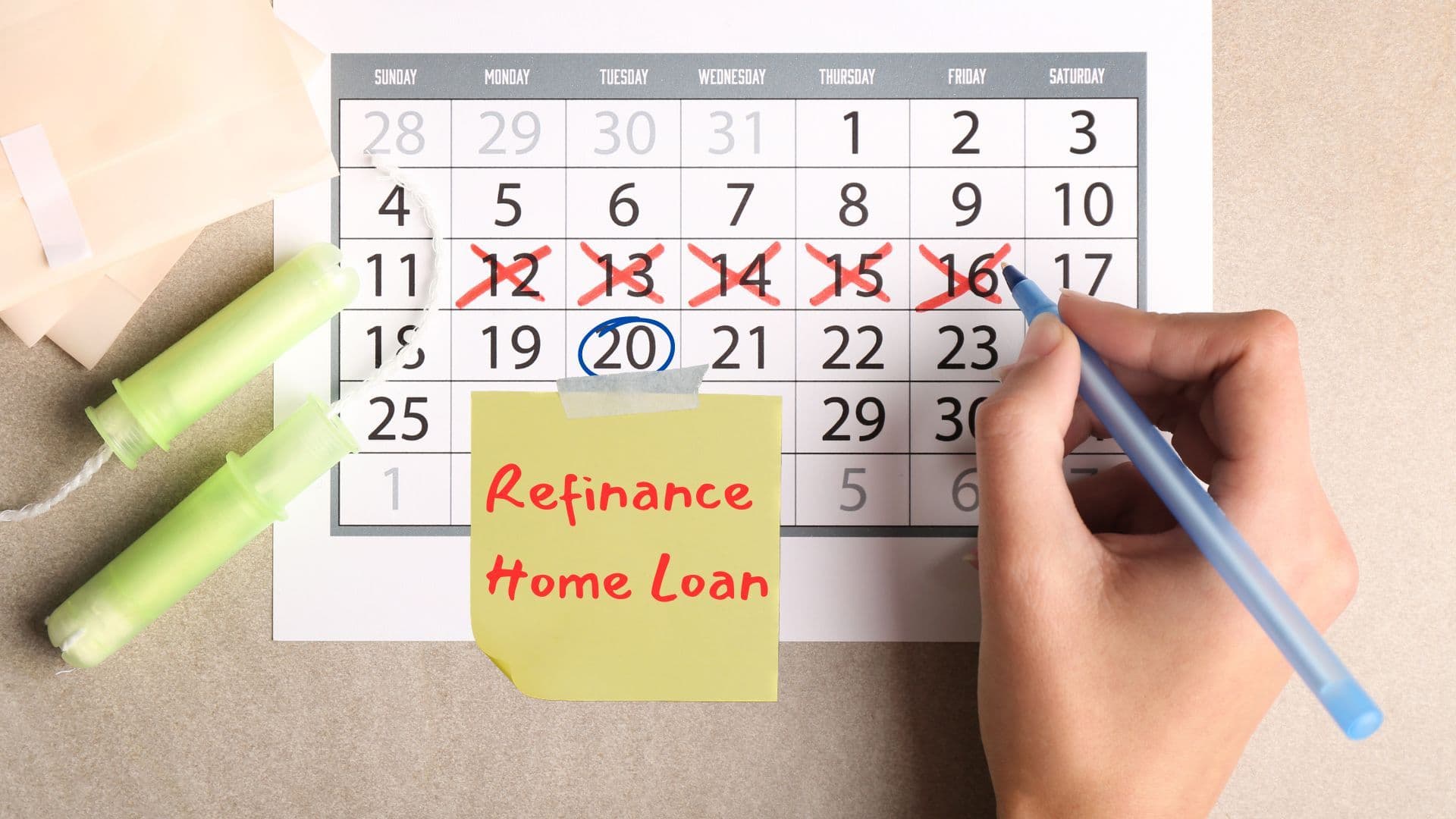Home Of Fair Facts & Tips
When Should I Refinance My Home Loan
Discover optimal timing for refinancing your home loan to maxamise savings. Learn about interest rate trends, property value increases, and signs to watch for.

In today's fluctuating economic landscape, many homeowners are turning their attention towards home loan refinance options as a strategic move to enhance their financial wellbeing. With the Reserve Bank of Australia's dynamic adjustments to interest rates, and the property market experiencing its own set of ups and downs, the question, "Can I refinance my home loan?" has become increasingly pertinent. Refinancing your home loan can unlock a myriad of benefits, from lowering your monthly payments, adjusting your loan terms, to consolidating debt. It's a financial strategy that, when executed at the right time, can not only save you money but also align your mortgage closer to your current financial goals and lifestyle needs.
The Australian Competition & Consumer Commission (ACCC) has highlighted a compelling reason for homeowners to consider refinancing, especially for those whose loans have matured beyond three years. Their findings reveal that the interest rates for loans older than three years are, on average, 0.58% higher than new lending rates. This gap can translate to significant savings over the life of a loan, making refinancing an attractive option for eligible homeowners. Whether you're looking to secure the best refinance home loan rates, leverage your property's increased value, or prepare for a big expense, understanding when and how to refinance is key.
In this guide, we'll unravel the process of home loan refinancing, providing you with the insights and tools needed to navigate this journey. From recognising the signs that it's time to refinance your home loan, to choosing the best refinance home loan option that suits your needs, we'll cover all the bases. Whether you're pondering, "Should I refinance my home loan?" or you're already on the lookout for the best home refinance deals, you're in the right place. Let's dive into the world of home loan refinancing and explore how you can make this financial strategy work for you.
Understanding Home Loan Refinance
What is Home Loan Refinancing?
Refinancing your home loan means renegotiating your current mortgage terms with your existing lender or switching to a new lender altogether, with the aim of securing a better deal. This can involve changing the interest rate, loan term, or both. Homeowners often pursue home loan refinance to take advantage of lower interest rates, switch between fixed and variable rates, or access home equity for large purchases or debt consolidation. With Australia’s unique financial regulations and market dynamics, refinancing can serve as a powerful tool to optimise your mortgage according to current economic conditions and personal financial goals.
Evaluating Your Current Home Loan
Before diving into the refinancing process, it's crucial to take a comprehensive look at your current mortgage arrangement. Consider the interest rate you're paying now versus what's available in the market. If your loan is more than three years old, chances are, according to the ACCC, you could find a rate that's significantly lower. This examination isn't just about rates, though. Assess how much equity you've built in your property – this is a key factor lenders consider when approving a refinancing application. Additionally, your credit score plays a pivotal role; a higher score can unlock better rates.
When Should You Refinance Your Home Loan?
The decision to refinance should be timed to maximise your financial benefits. Here are some indicators that it might be the right time for you to consider refinancing:
Time and Interest Rate Changes
If you've had your loan for more than five years, it's highly likely you could secure a lower interest rate given the market's fluctuating nature. The ACCC's finding that loans older than three years often carry rates 0.58% higher than those for new loans underscores the potential savings from refinancing.
Interest Rate Movements
The Reserve Bank of Australia (RBA) adjustments to the official cash rate directly affect home loan interest rates. A downward trend in rates can make refinancing attractive, enabling you to lock in a lower rate and reduce your monthly repayments.
Increase in Property Value
A rise in your property's market value can increase your equity, improving your loan-to-value ratio (LVR). This can make you eligible for more competitive interest rates, as lenders view you as a lower-risk borrower.
Purchasing Another Property
Refinancing can free up equity in your home, providing you with the capital needed for a down payment on an investment property or a second home.
Facing Significant Expenses
Life events such as planning a major renovation, buying a new car, or covering a medical bill can prompt a review of your financial strategy. Refinancing can provide access to funds at a lower interest rate compared to personal loans or credit cards.
Expiring Fixed Rate Terms
If your fixed-rate period is coming to an end, it's an opportune time to review your home loan. Switching to a variable rate or refinancing to another fixed rate can protect you from future rate increases.
Each of these scenarios presents a unique opportunity to reassess your current mortgage and consider the benefits of refinancing. By understanding when to refinance and what to look for in a new loan, homeowners can make informed decisions that align with their financial objectives.
Steps to Refinance Your Home Loan
Refinancing your home loan can seem daunting, but by breaking it down into manageable steps, homeowners can navigate the process with confidence. Here's how to approach refinancing your home loan for the best outcome:
Determine Your Financial Goals
The first step in the refinancing process is to clarify what you aim to achieve. Are you looking to reduce your monthly repayments, shorten your loan term, or maybe access equity for a major purchase? Your goals will guide the refinancing process, helping you to choose the product that best fits your needs.
Choosing the Best Refinance Home Loan
With a clear understanding of your refinancing objectives, it's time to explore the market for the best refinance home loan options. Here's what to consider:
- Interest Rates: Even a slight reduction can save you thousands over the life of your loan. Compare rates from different lenders, including banks and non-bank lenders, to find the best deal.
- Loan Features: Look for loans that offer features aligned with your financial goals, such as redraw facilities or offset accounts, which can provide flexibility and savings.
- Fees and Costs: Be mindful of the fees associated with refinancing, including application fees, valuation fees, and any ongoing fees. These can impact the overall cost-effectiveness of your new loan.
Application and Approval
Once you've selected a lender and loan product, you'll need to submit an application. This process typically involves providing documentation about your financial situation, such as proof of income, expenses, assets, and liabilities. Your chosen lender will then assess your application, which may include a property valuation, to determine if you meet their lending criteria.
Closing Your Refinance
After your refinancing application is approved, you'll move to the closing phase. This involves signing a new loan contract and potentially paying any applicable fees, such as discharge fees from your old lender and establishment fees for your new loan. Once completed, your new lender will pay out your old loan, and you'll commence repayments under the terms of your new agreement.
Executing the Refinance Process
Successfully refinancing your home loan requires careful preparation and attention to detail. From determining your financial goals to choosing the right loan and navigating the application and approval process, each step is crucial to securing a refinancing deal that meets your needs. Remember, while refinancing can offer significant financial benefits, it's important to consider the timing and ensure that the decision aligns with your overall financial strategy. By taking a measured and informed approach, you can leverage refinancing as a powerful tool to enhance your financial well-being.
Refinancing your home loan can raise many questions. Here are answers to some of the most frequently asked questions that can help clarify the process and what to expect.
Can I refinance my home loan with bad credit?
Yes, it's possible to refinance your home loan even with bad credit. However, your options may be more limited, and the terms may not be as favourable as those available to borrowers with good credit. Lenders will consider your entire financial situation, including income, employment stability, and the equity in your property, not just your credit score. It's advisable to speak with a financial advisor or a mortgage broker who can guide you towards lenders more likely to accept your application.
How long does it take to refinance a home loan?
The time it takes to refinance a home loan can vary, typically ranging from a few weeks to a few months. The timeline depends on several factors, including the complexity of your financial situation, the lender's processing times, and how quickly you can provide the required documentation. To expedite the process, have all necessary documents ready and respond promptly to any requests from your lender.
Will refinancing my home loan affect my credit score?
Refinancing can have a temporary impact on your credit score. When you apply for refinancing, the lender will perform a credit check, which is recorded on your credit report. If you shop around and apply to several lenders within a short period, it could lower your score. However, the impact is usually minor and temporary. Making your new loan repayments on time can help your credit score recover and even improve over time.
Is it possible to refinance without extending the loan term?
Absolutely. When refinancing, you can choose to keep your loan term the same or even shorten it. If you're aiming to reduce the overall interest paid over the life of the loan, opting for a shorter term while securing a lower interest rate can be a smart financial move. Be sure to discuss your goals with your lender or mortgage broker to find the best refinancing option for your situation.
What are the risks and considerations when refinancing?
While refinancing can offer significant benefits, such as lower interest rates or better loan features, it's important to be aware of the potential downsides:
- Fees and Charges: Refinancing can come with costs, such as application fees, valuation fees, and discharge fees from your current lender. Make sure these costs don't outweigh the benefits of refinancing.
- Increased Loan Term: Refinancing to a longer loan term can lower your monthly payments but might result in you paying more interest over the life of the loan.
- Lender's Mortgage Insurance (LMI): If you're borrowing more than 80% of your property's value, you may need to pay LMI again, even if you paid it on your original loan.
Conclusion
Refinancing your home loan is a significant financial decision that can lead to substantial savings and more favourable loan terms. By understanding when to refinance, how to choose the best refinance home loan, and what the process entails, you can navigate the journey with confidence. Armed with the knowledge from these FAQs and a clear understanding of your financial goals, you're well-equipped to make an informed decision about whether refinancing is right for you.
Disclaimer: Unless otherwise specified, the opinions expressed in this article are strictly for general informational and entertainment purposes only and should not be taken as financial advice or recommendation. Views are subject to change without notice at any time.
Written By

The Craggle Team

